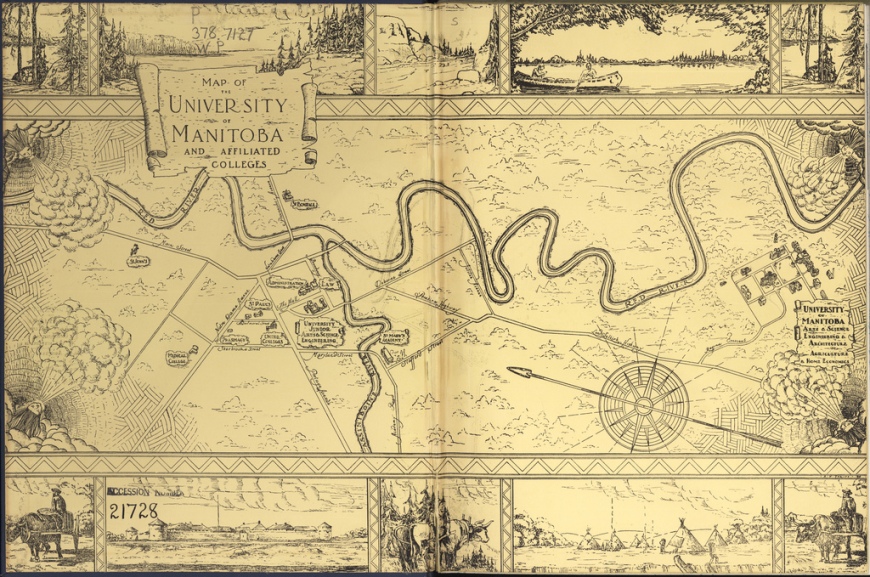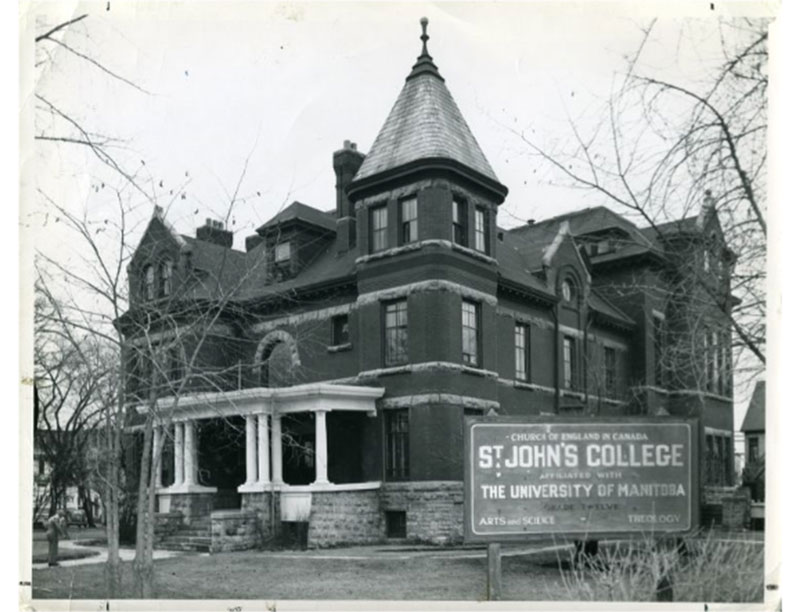
The Colleges of the University of Manitoba: A look into the past
New and old students of UM may be curious about our campus’ history. What’s the deal with the various colleges? What exactly is UM’s relationship with Université de Saint-Boniface? For those that have had their curiosity piqued by going into the libraries and seeing the portraits of previous chancellors, or when seeing the dates inscribed into some of the buildings on the Fort Garry campus without any context, here are some tidbits about the University’s early history.
The University of Manitoba, as it exists now, was established in 1877 through an act of provincial legislation to allow various colleges in Manitoba to confer degrees to their students. These colleges, operating in various neighbourhoods and municipalities, worked together through an affiliation with the UM to increase their programming and adopt the degree programs present in Eastern Canada at the time. The original founding colleges were the Catholic St. Boniface College in St. Boniface, Manitoba; the Presbyterian Manitoba College in Winnipeg, Manitoba; and the Anglican St. John’s College in Winnipeg, Manitoba.

Old St. John’s College at the turn of the century, courtesy of Archives and Special Collections
At its inception, UM was more like a network of affiliated institutions collaborating on educational matters such as mandatory courses and graduation criteria- but operating in a diverse way according to the linguistic and denominational needs of the communities they served.
The UM continued to expand, with more colleges joining the university such as the Manitoba Medical College in 1882, the Methodist Wesley College (later United College) in 1888, the Manitoba College of Pharmacy in 1901, and the Manitoba Agriculture College (the current administration building) in 1906. The latter was the beginning of the Fort Garry Campus.
Astute students may make two observations. Wesley College? Doesn’t that share a name with the Wesley Hall at the University of Winnipeg? That is correct! In fact, Wesley College and Manitoba College merged to become United College which, in 1967, became the University of Winnipeg. Another college, Brandon College, which joined in 1938, also became its own institution in 1967 as Brandon University. More recently, the Université de Saint-Boniface (USB) became its own institution in 2011. Throughout its history, different institutions have joined or left UM depending on their educational needs. St. Andrew’s College, for example, is one of the newest additions to UM network, while USB remains affiliated with UM. In some instances, the affiliation process isn’t as simple as just joining. The Catholic St. Paul’s College, for example, joined UM in 1931 when the Catholic Church bought the former Manitoba College building, before eventually relocating to the Fort Garry Campus. As illustrated, UM is much, much more than just the Fort Garry Campus.
Another observation astute students may have made related to the Fort Garry Campus. Despite the Agricultural College joining in 1906, the UM has operated since 1877. Where, then, was the UM? Until the 1960s the UM actually had a downtown campus on Broadway. Its centrality made it a stone’s throw from many of the colleges affiliated with the university. The building sadly no longer exists, and Memorial Park is where the campus once was. All that remains are some of the stones from the foundation which are outside of the Armes Building. See if you can spot them by the date inscribed on the stone next time you have classes there. In addition to the Broadway campus, the UM also made use of the former Law Courts as the university grew.
Today, UM has four colleges with their own student associations and student services: St. Andrew’s College, St. John’s College, St. Paul’s College, and University College. Consider joining one of the colleges to find your community on campus. UM also has numerous campuses and programs providing education and research opportunities across the city of Winnipeg and the province of Manitoba.
This has been but one quick dive into the history of UM. The Archives and Special Collections has compiled a list of web resources with information on UM’s past. For students wanting to engage with UM’s past, the Archives and Special Collections are located on the third floor of Elizabeth Dafoe Library and can be contacted at archives[at]umanitoba[dot]ca. Thanks to the dedicated work of archivists and researchers, students in the present can better understand what it was like for students in the past, and to connect the programs and education of UM in a larger chain of post-secondary education in the province and Western Canada.






